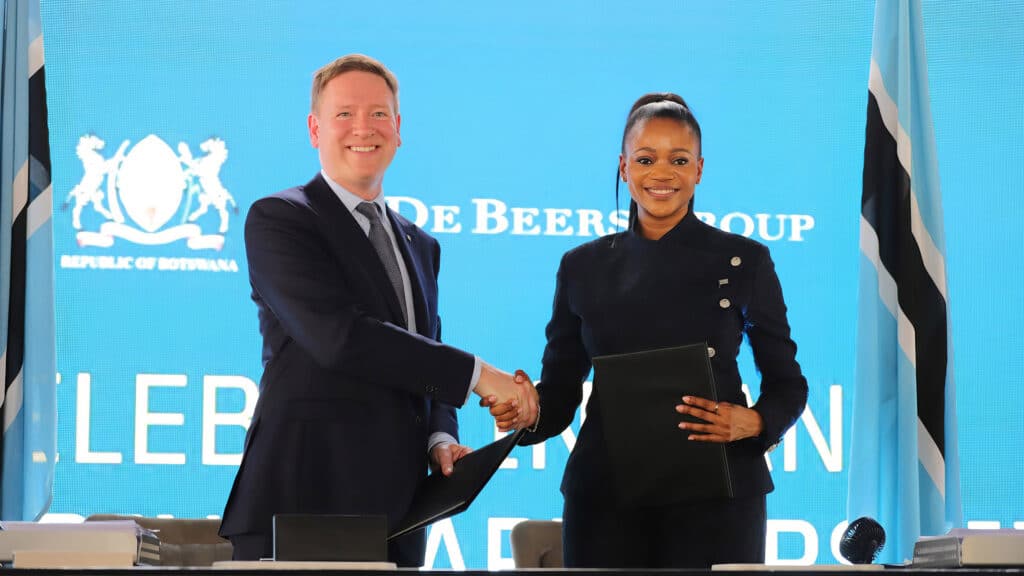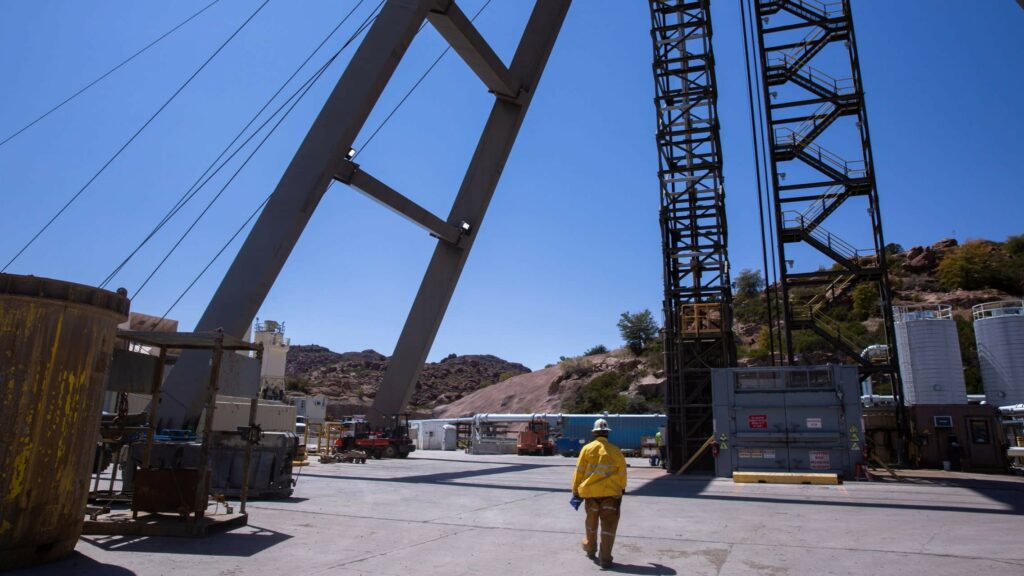On 25 February 2025, the Government of Botswana and De Beers Group formally signed a landmark agreement extending their partnership for the next generation. The deal includes a 10-year Sales Agreement (with a possible 5-year extension) and a 25-year renewal of mining licenses from 2029 to 2054 for their 50:50 Debswana mining joint venture.
This agreement underscores Botswana’s strategic role in the global diamond industry while reinforcing De Beers’ stake in the world’s richest diamond resources. The partnership aims to stabilize market confidence, increase Botswana’s economic development, and enhance beneficiation through local diamond processing and industry expansion.
Highlights of the Agreement
- 25-Year Mining License Extension: Ensuring Debswana’s long-term mining operations beyond 2029.
- 10-Year Sales Agreement (extendable by 5 years):
- First 5 years: Botswana’s Okavango Diamond Company (ODC) to sell 30% of Debswana’s rough diamonds, De Beers to sell 70%.
- Second 5 years: ODC’s share increases to 40%, De Beers’ share declines to 60%.
- Potential extension period (last 5 years): 50-50 split between ODC and De Beers.
- Diamonds for Development Fund: De Beers commits an initial BWP 1 billion ($75 million) plus additional contributions based on Debswana’s performance to drive economic growth and diversification.
- Enhancing Botswana’s Diamond Industry:
- A diamond jewelry manufacturing facility.
- A De Beers Institute of Diamonds grading laboratory.
- A diamond vocational training institute in collaboration with industry partners.
- Co-Investment in Diamond Marketing: Botswana and De Beers will jointly invest in global marketing efforts to boost diamond demand and consumer confidence.
Industry Insights and Economic Context
Botswana’s Diamond Industry at a Crossroads
Botswana is the world’s top producer of diamonds by value, contributing 25% of global supply. However, market volatility, geopolitical shifts, and changing consumer preferences pose challenges. The new agreement reflects Botswana’s strategy to maximize diamond value retention and ensure long-term economic sustainability.

Key Economic and Industry Trends
- Shift Towards Local Beneficiation: Botswana is increasing local diamond cutting and polishing to capture more value-added benefits.
- Market Stability Efforts: The agreement aims to restore market confidence in diamonds, especially amid declining demand in traditional markets like the U.S. and China.
- Ethical and Sustainable Mining: Botswana continues to position itself as a leader in ethical diamond sourcing and environmental sustainability.
- De Beers’ Strategic Pivot: With natural diamond demand fluctuating, De Beers is balancing investments between natural and lab-grown diamonds.
Botswana’s Vision for Sustainable Economic Growth
1. Economic Diversification Beyond Diamonds
Botswana has long relied on diamonds for up to 90% of export earnings. However, the government is leveraging diamond revenues to diversify into:
- Manufacturing and beneficiation
- Renewable energy and mining technology
- Tourism and financial services
- Agriculture and digital transformation
2. The Role of the Diamonds for Development Fund
The BWP 1 billion fund will be invested in:
- Education and skills training to develop local expertise in diamond grading and manufacturing.
- Infrastructure projects to support economic diversification.
- Entrepreneurial funding for local businesses in diamond-related industries.
3. The Growing Influence of Okavango Diamond Company (ODC)
The revised Sales Agreement increases ODC’s market share, gradually moving towards a 50-50 split with De Beers. This shift signifies Botswana’s greater autonomy over its resources while maintaining De Beers’ expertise in global distribution.

The Global Diamond Industry: Challenges and Opportunities
1. Market Uncertainty and Consumer Preferences
Global diamond sales have faced headwinds due to:
- Economic slowdowns in China and the U.S.
- Changing consumer preferences, especially among younger buyers favoring lab-grown diamonds.
- Ethical concerns, pushing demand towards traceable, conflict-free diamonds.
2. Competition from Lab-Grown Diamonds
Lab-grown diamonds (LGDs) are gaining traction due to their affordability and sustainability. The natural diamond industry must emphasize heritage, uniqueness, and rarity to differentiate itself.
3. Botswana’s Advantage in Ethical Diamond Sourcing
Botswana has a strong reputation for responsible mining practices, making its diamonds highly attractive to consumers prioritizing ethical sourcing and environmental sustainability.
A Pioneering Partnership for the Future
The renewed Botswana-De Beers agreement is more than just a business deal—it’s a strategic framework for economic transformation. By securing long-term mining rights, increasing Botswana’s role in the global diamond supply chain, and committing to economic development, this partnership is set to redefine Botswana’s economic future.
For De Beers, the agreement guarantees continued access to some of the world’s most valuable diamond resources, reinforcing its leadership in the industry. For Botswana, it marks a step toward greater self-reliance and sustainable growth, ensuring that its diamond wealth continues to benefit future generations.







